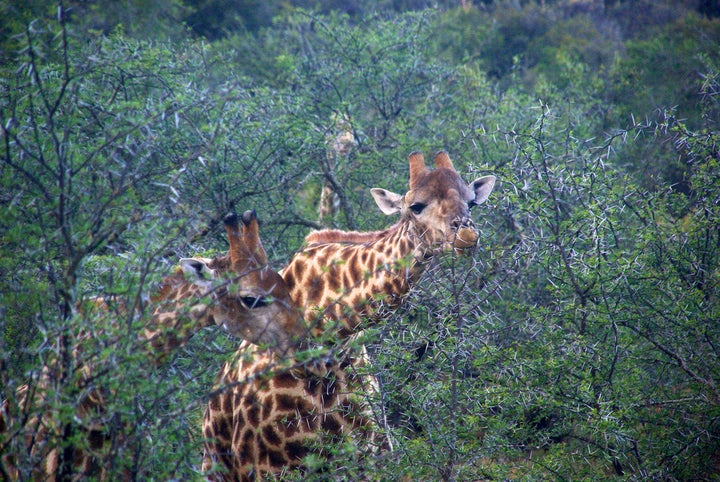
Day 4: Today we drove down into the Ngorongoro Crater, a giant 10 mile wide (over 100 square miles altogether) anciently collapsed volcanic crater which reportedly supports the greatest concentration of wildlife on the planet. I can't vouch for the claim, but the quantity and diversity of wildlife just blew us away!
An animal so rare I did not dare hope to see, two black rhinos stood like boulders on the horizon, surrounded by grazing Thompson's gazelle and giant Marabou stork. They were too far for a photo (at least with my lenses) but their profile is unmistakable. I am reminded that rhino horn is ounce for ounce the most valuable substance on the planet, more valuable than either gold or cocaine. Considered by some cultures surefire ways for a man to be a super-virile stud, rhinos have been hunted almost to the point of extinction (long hunted without meaningful restriction, now illegally poached). What price vanity? Too high a price indeed.
Talking about this sad fact with our guide, it's an easy segue to another related and equally sad fact: we are surprised and confused by seeing quite a few elephants with oddly thin tusks or even no tusks at all. Both male and female African elephants are, of course, supposed to have these massive tusks. The thinking here is that since the animals with the prized large tusks have disproportionately attracted and been killed by poachers, it is those individuals with the smaller tusks who have also disproportionately survived and been able to continue to contribute to the genetics of the surviving herd. Evolution is once again at work helping a species adapt in order to survive. (Does anyone really still doubt evolution, and could such doubters include people running for the job of U.S. president? What year is this, anyway? I am so not missing the nightly news!)
We see prides of lion, and both see and smell a bridge of hippos (called a "bridge" because this dense pile-up of huge shiny backs surfacing just above the water appear like a solid bridge one could cross to get to the other side). (That term "bridge" being but one of the several fabulous terms we come across for groups of animals. Another favorite, a "dazzle" of zebra. Visualize the zany, disorienting, wildly striped pattern made by a large herd of Zebra standing close to each other, and dazzle will make instant sense!)
We see today first one and then a second cheetah. These are, of course, the fastest animal on land with speeds clocked of up to 75 miles per hour. The numbers of these once extremely rare cat are increasing, but there is still very dire projection for the future of the species due to a far too small genetic pool from which all of today's animals originate.
Everywhere I turn, I am struck by strong and conflicting realities: a great quantity and diversity of animals which masks but does not change the real threat to their future; the beauty of being here, seeing all of this, and the fact that it is my own species' presence which has put this all at such risk.
